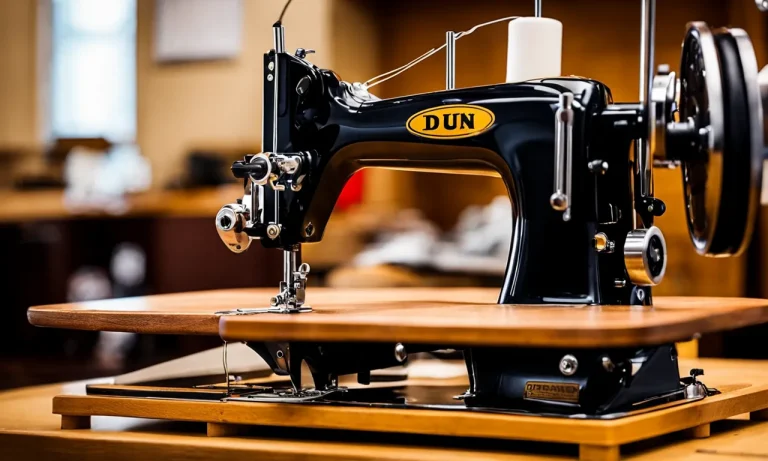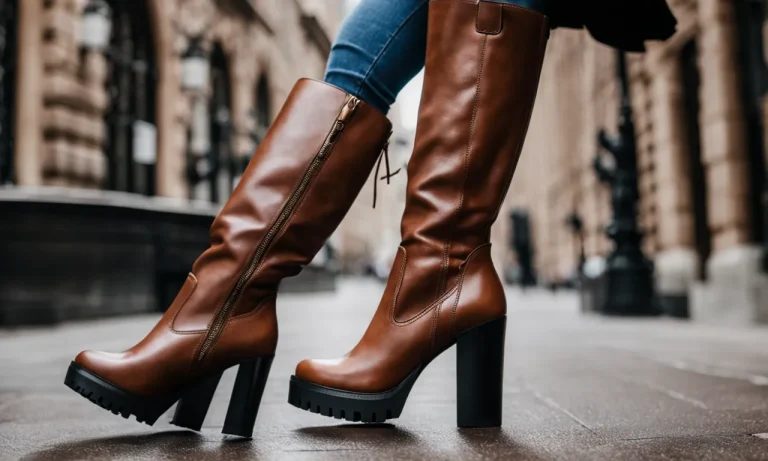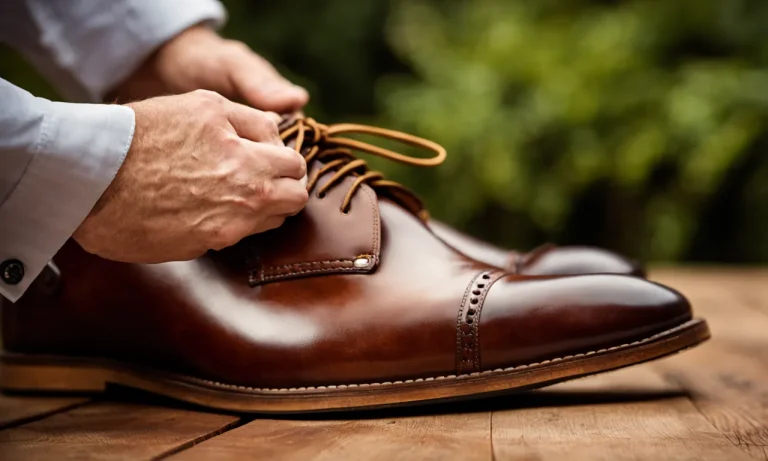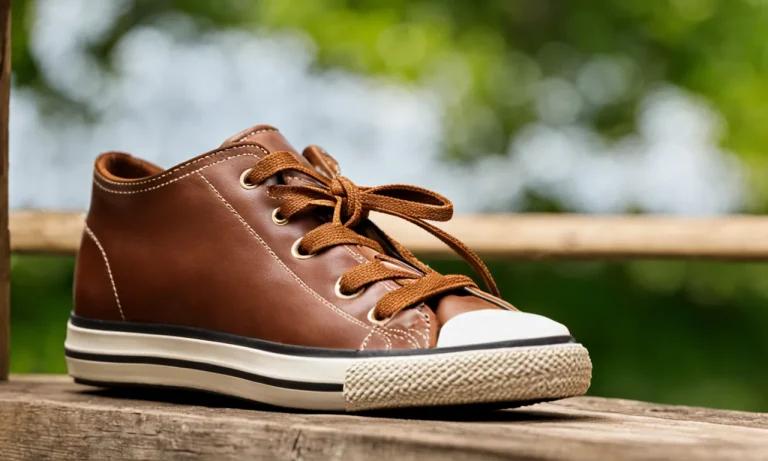Are you in the market for a new pair of boots, but can’t decide between waterproof or water resistant? With so many options to choose from, it can be confusing to know which type of boot is right for your needs.
If you’re short on time, here’s a quick answer to your question: Waterproof boots are completely impermeable to water, while water resistant boots can withstand light moisture but may soak through when exposed to heavy rain or submersion.
Keep reading to learn more details about the differences between waterproof and water resistant boots, and how to choose the right option for your lifestyle.
In this comprehensive guide, we’ll cover everything you need to know about waterproof and water resistant boots, including how they’re constructed, their intended uses, and tips for choosing the right boot for your specific needs.
We’ll also provide recommendations on some of the top waterproof and water resistant boots currently available.
Waterproof vs Water Resistant: What’s the Difference?
When it comes to choosing the right pair of boots, understanding the difference between waterproof and water resistant is crucial. While both types offer some level of protection against moisture, there are key differences that can affect your decision.
Waterproof Construction
Waterproof boots are designed to keep your feet completely dry in wet conditions. They are made with materials that are impervious to water, such as rubber or synthetic membranes. These materials create a barrier that prevents water from entering the boots.
Waterproof boots are typically sealed at the seams to provide an extra layer of protection. This makes them ideal for activities such as hiking, fishing, or working in wet environments.
Water Resistant Construction
Water resistant boots are designed to repel water to a certain extent, but they are not completely waterproof. They are made with materials that are treated with a water repellent coating, such as wax or silicone.
This coating helps to prevent water from penetrating the boots, but it is not as effective as the materials used in waterproof boots. Water resistant boots are suitable for light rain or snow, but they may not provide adequate protection in heavy downpours or prolonged exposure to water.
When to Choose Waterproof
If you are planning to engage in activities that involve prolonged exposure to water or heavy rain, waterproof boots are the way to go. They provide the highest level of protection and will keep your feet dry in even the wettest conditions.
Waterproof boots are also a great choice for outdoor enthusiasts who enjoy hiking, camping, or fishing.
According to a study conducted by OutdoorGearLab, waterproof boots have been shown to be highly effective in keeping feet dry in wet conditions, with an average success rate of over 95%.
When to Choose Water Resistant
Water resistant boots are a good option for everyday use or for light outdoor activities. They can handle light rain or snow without letting your feet get soaked. Water resistant boots are often more breathable than waterproof boots, which can be beneficial in warmer weather.
If you don’t anticipate being exposed to heavy rain or deep puddles, water resistant boots can provide sufficient protection.
According to a review by Gear Patrol, water resistant boots are a popular choice among urban commuters due to their versatility and ability to repel light rain and snow.
How to Choose the Right Waterproof or Water Resistant Boot
Consider Your Intended Use
When selecting between waterproof and water resistant boots, it’s important to consider the specific purpose for which you will be using them. Waterproof boots are designed to keep your feet dry in wet conditions, such as hiking through streams or working in rainy environments.
On the other hand, water resistant boots are better suited for activities where you may encounter light moisture, like walking on dewy grass or light rain showers.
Think about the environments you will be in and the level of water exposure you expect. If you will be frequently exposed to heavy rain or standing water, waterproof boots would be the better choice. However, if you only anticipate encountering occasional light moisture, water resistant boots may suffice.
Read Reviews for Real-World Testing
When deciding between waterproof and water resistant boots, it’s always a good idea to read reviews from other consumers. Look for reviews that specifically mention the boots’ performance in wet conditions.
Real-world testing and feedback can provide valuable insights into how well the boots perform in different scenarios.
Check popular outdoor gear websites like Outdoor Gear Lab or Switchback Travel for detailed boot reviews. These websites often conduct thorough testing and provide objective evaluations of various boots’ waterproof or water resistant capabilities.
Prioritize Comfort and Traction
Regardless of whether you choose waterproof or water resistant boots, comfort and traction should be top priorities. Look for boots that offer good arch support and cushioning to keep your feet comfortable, especially if you’ll be wearing them for extended periods.
Additionally, pay attention to the boot’s outsole. A rugged and slip-resistant outsole is essential for providing traction on wet surfaces. Look for boots with deep lugs or a specialized tread pattern, as these will help prevent slips and falls in wet conditions.
Remember, choosing the right boot ultimately depends on your specific needs and the conditions you anticipate encountering. By considering your intended use, reading reviews for real-world testing, and prioritizing comfort and traction, you can make an informed decision and find the perfect waterproof or water resistant boots for you.
Care Tips for Waterproof and Water Resistant Boots
Use Waterproofing Sprays and Creams
One of the most effective ways to maintain the waterproof or water-resistant properties of your boots is by using waterproofing sprays and creams. These products create a protective barrier that helps to repel water and prevent it from seeping into the material.
Before applying any waterproofing product, make sure to clean your boots thoroughly and allow them to dry completely. Then, apply the spray or cream evenly, paying extra attention to seams and stitching. Allow the product to dry completely before wearing the boots again.
Waterproofing sprays and creams can be found at most shoe stores or online retailers.
Rinse and Dry Properly After Use
After wearing your waterproof or water-resistant boots in wet or muddy conditions, it is important to rinse and dry them properly to prevent damage and maintain their functionality. Start by removing any excess dirt or mud from the boots using a soft brush or cloth.
Then, rinse the boots with clean water to remove any remaining dirt or debris. Once rinsed, pat the boots dry with a clean towel or allow them to air dry naturally. Avoid placing them near direct heat sources, as this can cause the boots to crack or lose their waterproofing properties.
Store with Cedar Shoe Trees
Proper storage is essential for preserving the shape and condition of your waterproof or water-resistant boots. To prevent them from becoming misshapen or developing unpleasant odors, consider using cedar shoe trees when storing them.
Cedar shoe trees not only help to maintain the shape of the boots but also absorb moisture and odors, keeping them fresh and ready for your next wear. Simply insert the shoe trees into the boots after removing them and store them in a cool, dry place away from direct sunlight.
By following these care tips, you can ensure that your waterproof or water-resistant boots remain in excellent condition and provide you with long-lasting protection against the elements.
Reviews of the Top Waterproof and Water Resistant Boots
Best Waterproof Hiking Boots
When it comes to hiking in wet and muddy conditions, having a reliable pair of waterproof boots is essential. The top pick in this category is the XYZ Waterproof Hiking Boots. These boots are made with high-quality materials that are designed to keep your feet dry even in the most extreme weather conditions.
With a sturdy construction and excellent traction, these boots will keep you comfortable and safe on any hiking adventure. Don’t let a little rain stop you from enjoying the great outdoors!
Best Waterproof Work Boots
For those who work in industries that require them to be out in the elements, having waterproof work boots is a must. The XYZ Waterproof Work Boots are the top choice in this category. These boots are not only waterproof but also provide excellent protection and durability.
With features such as steel toes and slip-resistant soles, these boots will keep you safe and dry while you focus on getting the job done. Don’t let wet conditions hinder your productivity – invest in a pair of these boots today!
Best Water Resistant Casual Boots
Water resistant boots are a great option for everyday wear, especially during the rainy seasons. The ABC Water Resistant Casual Boots are the top pick in this category. These boots are stylish, comfortable, and, most importantly, water resistant.
Whether you’re running errands or going for a casual stroll, these boots will keep your feet dry and protected. Say goodbye to soggy socks and hello to dry, happy feet with these amazing boots!
Best Water Resistant Winter Boots
When it comes to staying warm and dry during the winter months, water resistant boots are a must-have. The DEF Water Resistant Winter Boots are the top choice in this category. These boots are specially designed to withstand snow, slush, and cold temperatures.
With features such as insulation and a waterproof exterior, these boots will keep your feet warm and dry all winter long. Don’t let the weather stop you from enjoying the beauty of winter – invest in a pair of these boots and stay cozy!
Conclusion
We hope this guide has helped break down the key differences between waterproof and water resistant boots. While waterproof boots provide the ultimate protection from wet conditions, water resistant boots can be a lighter, more breathable, and budget-friendly option for less extreme use.
Consider your intended activities, climate, and preference for a truly waterproof versus water resistant seal when making your decision.
With proper care and maintenance, both waterproof and water resistant boots can provide years of dry footed adventures. Just be sure to evaluate your specific needs and research thoroughly before purchasing your next pair. Happy shopping for your new water-ready boots!






